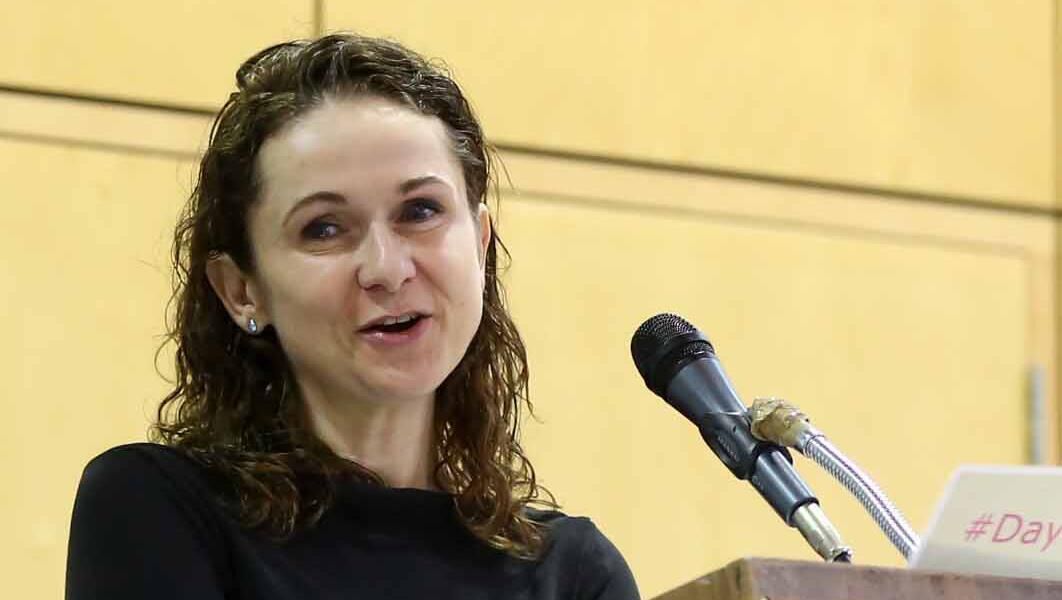Cianan Brennan: How the media covered the death of Savita Halappanavar

The death of Savita Halappanavar at University Hospital Galway played a crucial part in leading to the enactment of the first law defining the circumstances where an abortion could happen in Ireland. Picture: Irish Times / PA
If the current version of the abortion debate in the US ever seems a little abstract from Irish reality, you only have to look back 10 years to Ireland see how the country’s then-restrictive laws lead to a social outcry of our own.
You can also see the difference that media coverage can make — for the onslaught of press criticism which followed the death of Savita Halappanavar at University Hospital Galway a decade ago surely played a crucial part in leading, less than a year later, to the enactment of the first law defining the circumstances where an abortion could happen in Ireland, and to the full legalisation of the procedure in 2018.
The death of 31-year-old Savita wasn’t reported until fully two weeks after it occurred, with the ’ social correspondent Kitty Holland breaking a story on which she would lead the charge over the coming months.

The narrative of what was being written quickly devolved into a debate over 1992’s X Case — when a 14-year-old girl was left pregnant having been raped by a family friend, leading to a Supreme Court decision which allowed for abortion in cases where a woman’s life was endangered — which, primarily due to political stasis, had never been legislated for.
The fact that Savita was a foreign national doubtless played its part in the maelstrom of anger and disgust which followed her death — shining the harshest of global lights on Ireland’s less-than-liberal laws.
No more than Covid, Savita’s tragic death showed that social change can happen quickly in Ireland when politicians see which way the wind is blowing.
On November 15, three days after news of Savita’s death broke, the reported then-taoiseach Enda Kenny, in office barely a year, rejected the suggestion that his party’s abortion stance could be connected to the tragedy, insisting the two issues were “quite separate”.
The following day, Jennifer Schweppe, a lecturer in constitutional law at the University of Limerick, wrote in the same paper that the X Case needed to be legislated for.
The heaviest-hitting criticism came in the opinion pieces.
The ’s editorial on the same date likewise pulled no punches.
“Enda Kenny is the seventh man to be Taoiseach since 1983,” it read. “Like each of those predecessors he was well aware, long before he took office, that the abortion file in the Taoiseach’s in-tray required action.

In the Irish Independent on November 15, legal correspondent Dearbhail McDonald wrote scathingly of the "depth of anger and sorrow” which Savita’s death had brought her to.
“A visceral rage that has reduced me to tears of exasperation and despair,” she wrote. “Regardless of where we each stand on this perennially divisive issue, the need for a compassionate and clear legal infrastructure is overwhelming. For God’s sake, it’s what this Catholic country needs.”

Fintan O’Toole wrote in The Irish Times on November 17: “Savita and Praveen Halappanavar walked unknowingly into Ireland’s grey zone of hidden realities, unspoken truths, and word games,”
The ’s editorial the following day said simply: “Legislate now, or be damned.”
Ten days later and the narrative had been firmly set, with the Government scrambling to match the public’s expectations in terms of action over what had occurred.
On November 25, author Colum Kenny wrote in the that Savita’s death had “devastated her family and set the cat among the Coalition partners”.
“It has also highlighted again the gap between power and public accountability in Ireland, and the continuing failure to introduce meaningful reforms that allow rapid and appropriate responses to crises,” he wrote.
The pressure eventually told. With an expert group on abortion in the context of the X Case announcing its findings on November 23, the Government knew what its options were.
On December 18, barely seven weeks after Savita’s death, Health Minister James Reilly announced that the Government would be proceeding with legislation plus regulations.
Eight months after Savita’s death, the Protection of Life During Pregnancy Act was made law. Five years later, abortion was made legal in Ireland following an overwhelming referendum vote.
Social change, when it happens, happens quickly.
















